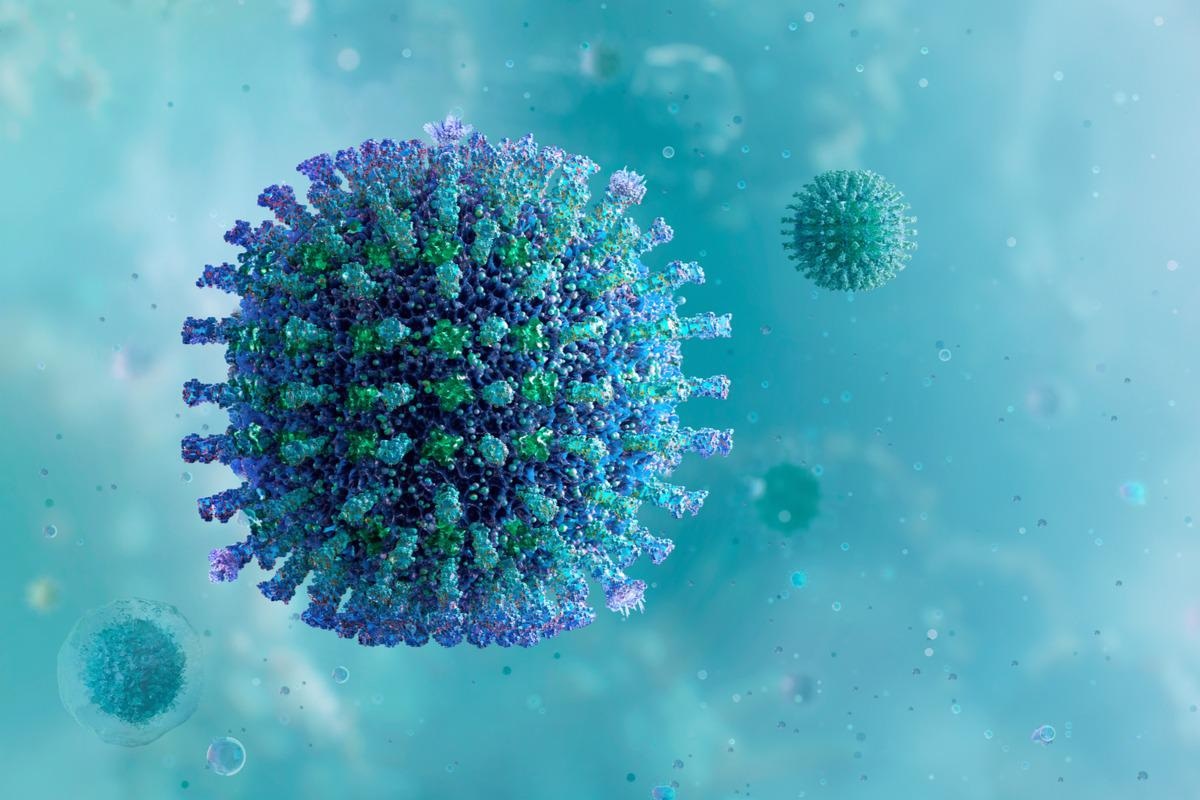In a recent study posted to the bioRxiv* preprint server, researchers assessed the role of adenoside diphosphate (ADP)-ribosylation factor 6 (ARF6) in severe acute respiratory syndrome coronavirus 2 (SARS-CoV-2) infection.
 Study: ARF6 is an important host factor for SARS-CoV-2 infection in vitro. Image Credit: Corona Borealis Studio/Shutterstock
Study: ARF6 is an important host factor for SARS-CoV-2 infection in vitro. Image Credit: Corona Borealis Studio/Shutterstock

 *Important notice: bioRxiv publishes preliminary scientific reports that are not peer-reviewed and, therefore, should not be regarded as conclusive, guide clinical practice/health-related behavior, or treated as established information.
*Important notice: bioRxiv publishes preliminary scientific reports that are not peer-reviewed and, therefore, should not be regarded as conclusive, guide clinical practice/health-related behavior, or treated as established information.
Background
SARS-CoV-2 is a beta-coronavirus that enters human cells through two routes: direct fusion at the plasma membrane or endocytosis and subsequent fusion with late lysosome or endosome. Various researchers have thoroughly studied the SARS-CoV-2 receptor, various entry factors, angiotensin-converting enzyme 2 (ACE2), as well as the mechanism via which the virus fuses with the plasma membrane. However, further research is required to understand the mechanism involved in the entry of the virus via the endocytic pathway.
About the study
In the present study, researchers determined the function of ARF6 in SARS-CoV-2 endocytosis and subsequent infection.
The team screened several cell lines to assess the antiviral activity of a specific inhibitor of transmembrane serine protease 2 (TMPRSS2) called camostat mesylate. Infection readout was further performed via an imaging-based pipeline that used SARS-CoV-2 nucleocapsid (N) antibody to detect infected cells. The team also determined whether dynamin affected viral entry into the Huh-7 cells using a specific guanosine triphosphatase (GTPase) inhibitor of dynamin called dynasore. A cholesterol-removing agent called beta-methyl cyclodextrin was used as a positive control since it blocked the formation of lipid rafts, which are essential for endocytosis.
The team also developed two polyclonal populations of clustered regularly interspaced short palindromic repeats (CRISPR)-targeted cells having guide ribonucleic acids (gRNAs) that were specific for ARF6. Depletion of ARF6 was verified using reverse transcription-polymerase chain reaction (RT-PCR). The cells were infected with SARS-CoV-2, and the viral infection and replication were quantified using a 50% tissue culture infectious dose (TCID50) assay and RT-quantitative PCR (RT-qPCR), respectively.
Furthermore, the team tested the effect of inhibitor NAV-2729 and agonist AA147 on SARS-CoV-2 infection. The mechanism by which ARF6 supports SARS-CoV-2 replication in Calu-3 cells was also assessed by infecting ARF6 knockout and NTg cells with the SARS-CoV-2 Omicron variant.
Results
The study results showed that the human hepatocarcinoma cell line Huh-7 showed substantial resistance to the antiviral activity of camostat. On the other hand, treatment of the cell line with the irreversible cysteine protease inhibitor Z-FA-FMK resulted in strong antiviral activity. This suggested that the entry of SARS-CoV-2 into the Huh-7 cells was possibly mediated by endocytosis and not the fusion of the plasma membrane. Therefore, the team used Huh-7 cells as a representation to mechanistically study the endocytic entry of SARS-CoV-2.
Treatment with beta-methyl cyclodextrin blocked viral infection, while treatment with dynasore increased the proportion of infected cells. This suggested that the endocytic uptake mechanism used by SARS-CoV-2 was dependent on cholesterol. Analysis with CRISPR cells showed no difference between non-targeting guide (NTg) and ARF6, while the viral replication was under the detection limit for the ACE-2 Huh-7 cells. The team also observed a substantial reduction in the proportion of infected cells in ARF6 cells, which suggested that ARF6 played an important role in viral entry.
The inhibitor NAV-2729 displayed a dose-response inhibition of infection while the agonist AA147 increased the proportion of infected cells. This indicated that ARF6 was a crucial factor in the SARS-CoV-2 infection of Huh-7 cells. Furthermore, the treatment of ARF-6 knockout cells with dynasore did not affect the infection, thus confirming that dynamin was not involved in the endocytosis of SARS-CoV-2 in Huh-7 cells. The team also noted that treatment with NAV-2729 substantially reduced viral replication.
Additionally, the team observed that SARS-CoV-2 infection was less efficient in Calu-3 cells that were transduced with ARF6-targeting guide as compared to Calu-3 cells that were transduced with NTg. Also, the reduction in SARS-CoV-2 infection in the Calu-3 ARF6 knockout cells was higher than in the Huh-7 ARF6 knockout cells, which suggested that ARF6 played more roles in Calu-3 cells than in Huh-7 cells.
Infection of ARF6 knockout cells with the SARS-CoV-2 Wuhan strain and the Omicron variant showed a significant decline compared to that in the NTg cells. This indicated that ARF6 might be involved in post-entry steps in Calu-3 cells.
Conclusion
Overall, the study findings highlighted the potential of ARF6 as a target for the development of therapeutic agents against SARS-CoV-2 infection. The researchers believe that future studies that focus on investigating drugs that target ARF-6 could lead to the development of SARS-CoV-2 therapeutics.

 *Important notice: bioRxiv publishes preliminary scientific reports that are not peer-reviewed and, therefore, should not be regarded as conclusive, guide clinical practice/health-related behavior, or treated as established information.
*Important notice: bioRxiv publishes preliminary scientific reports that are not peer-reviewed and, therefore, should not be regarded as conclusive, guide clinical practice/health-related behavior, or treated as established information.